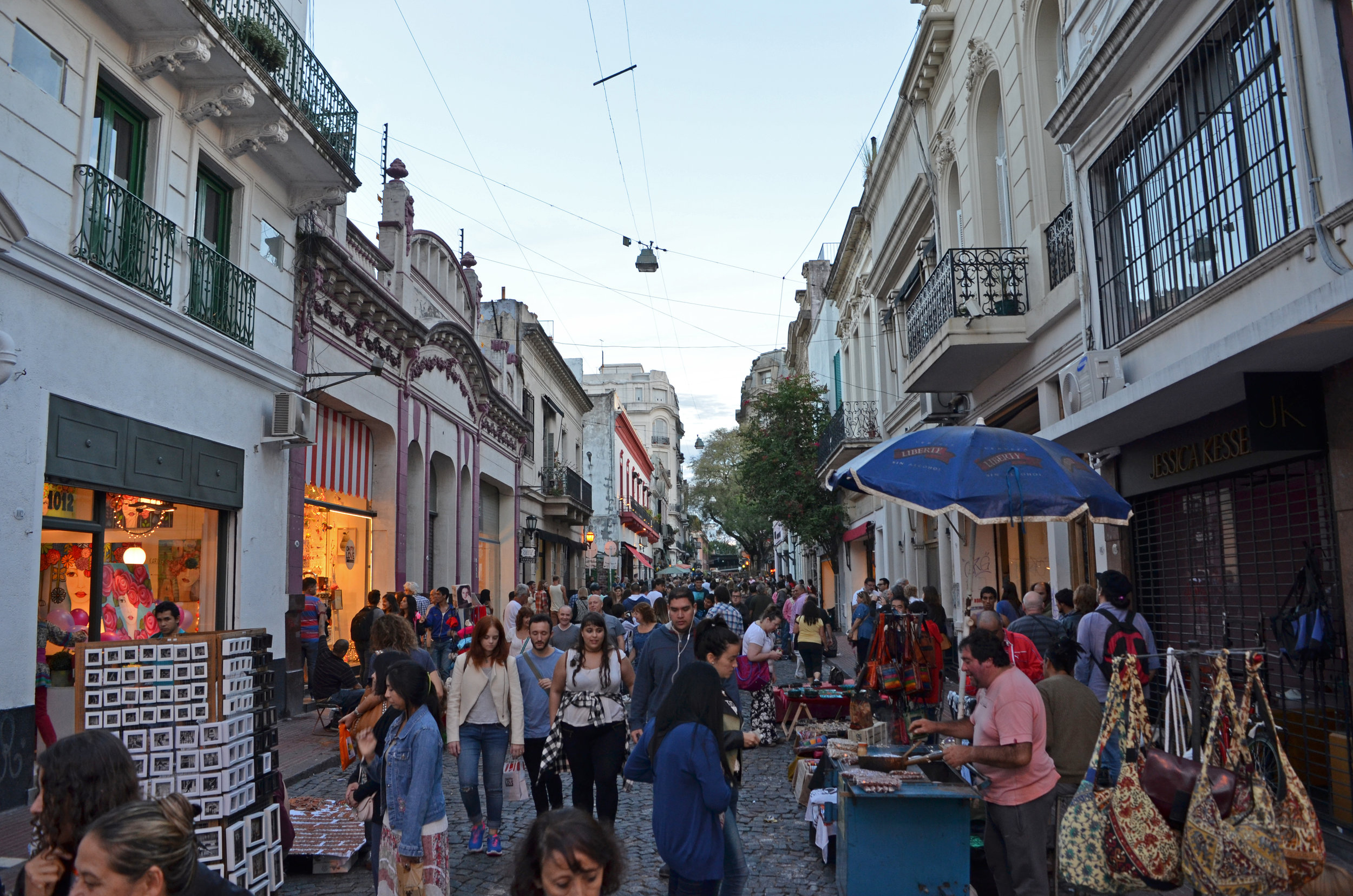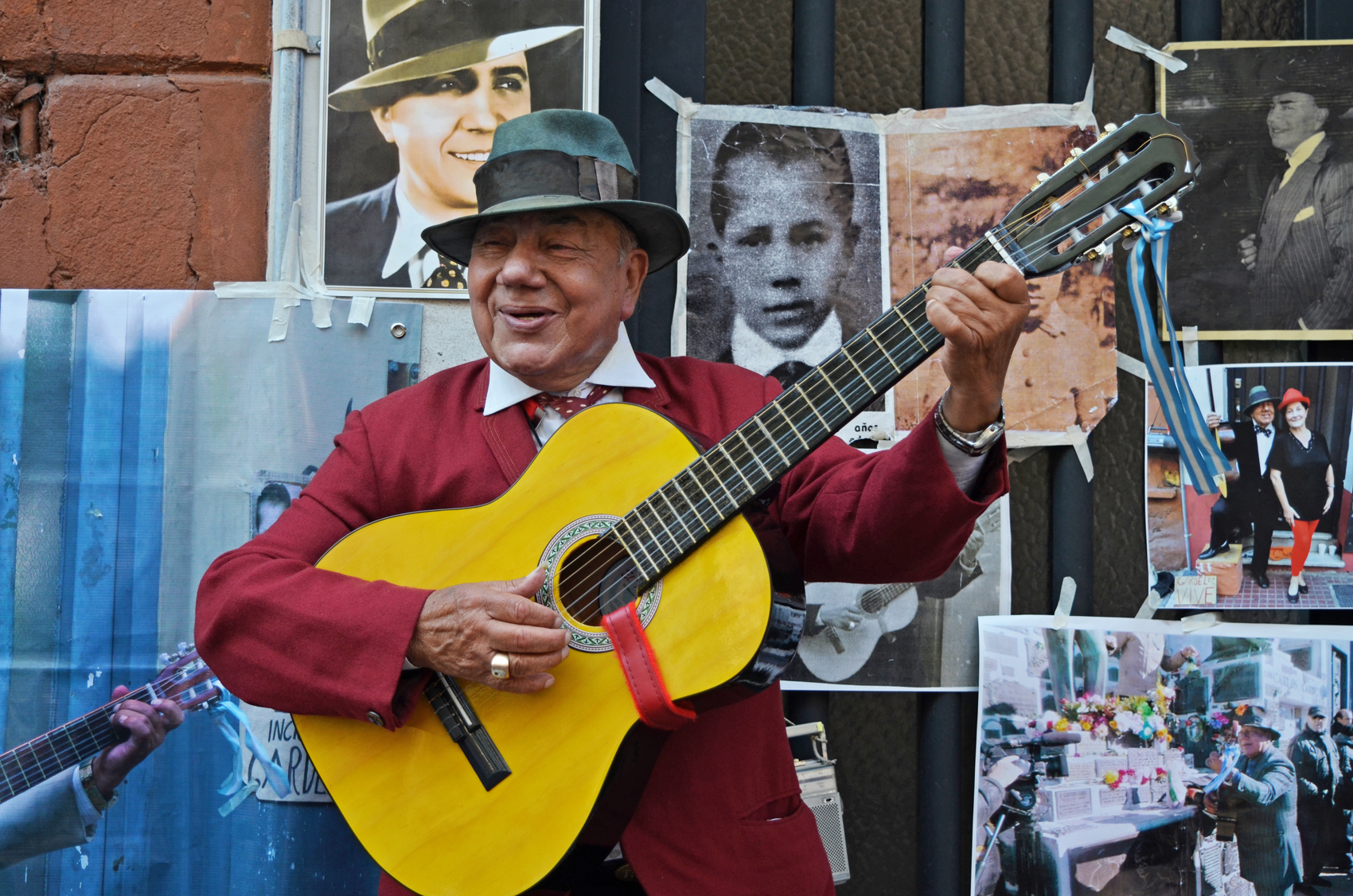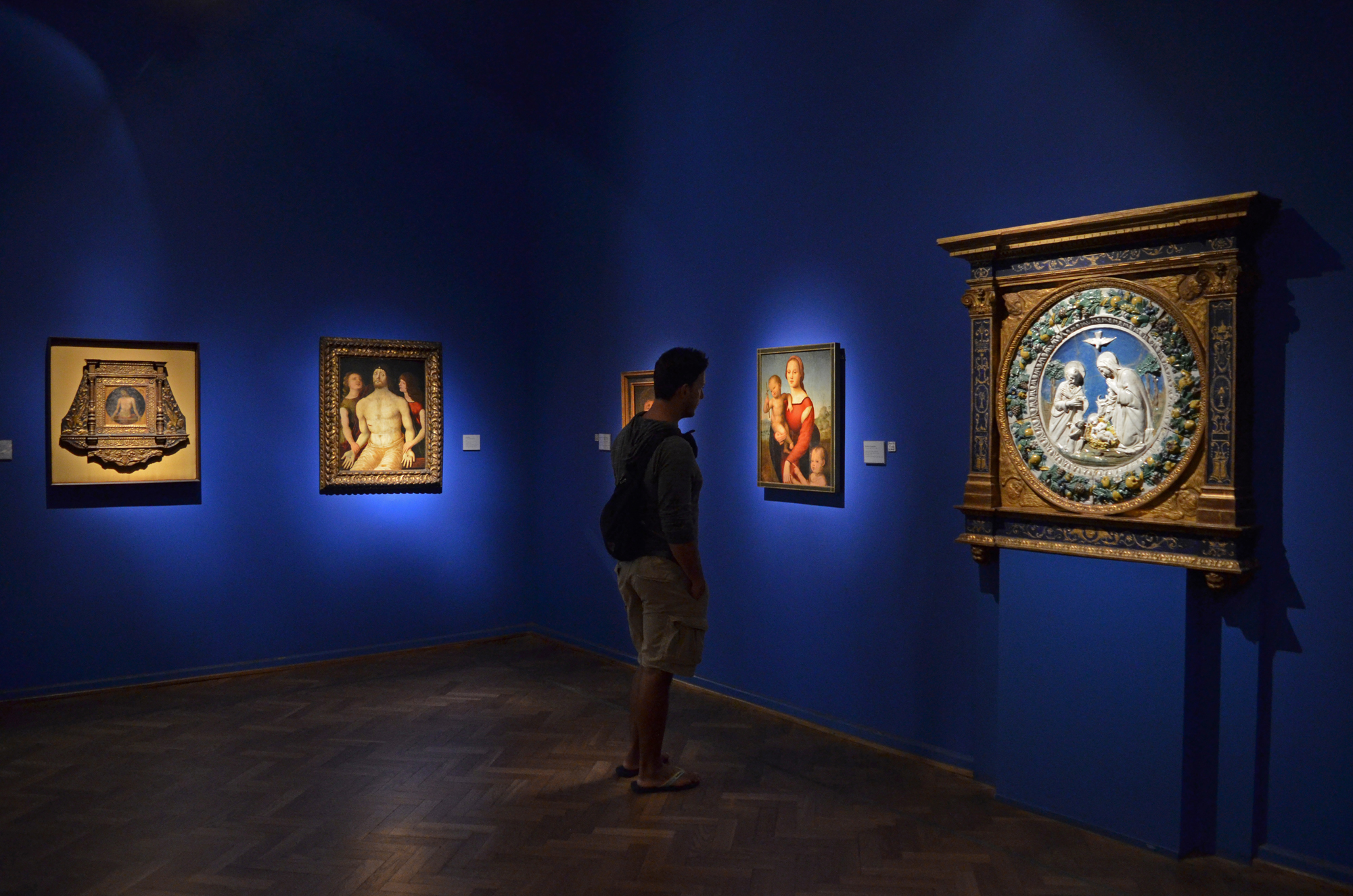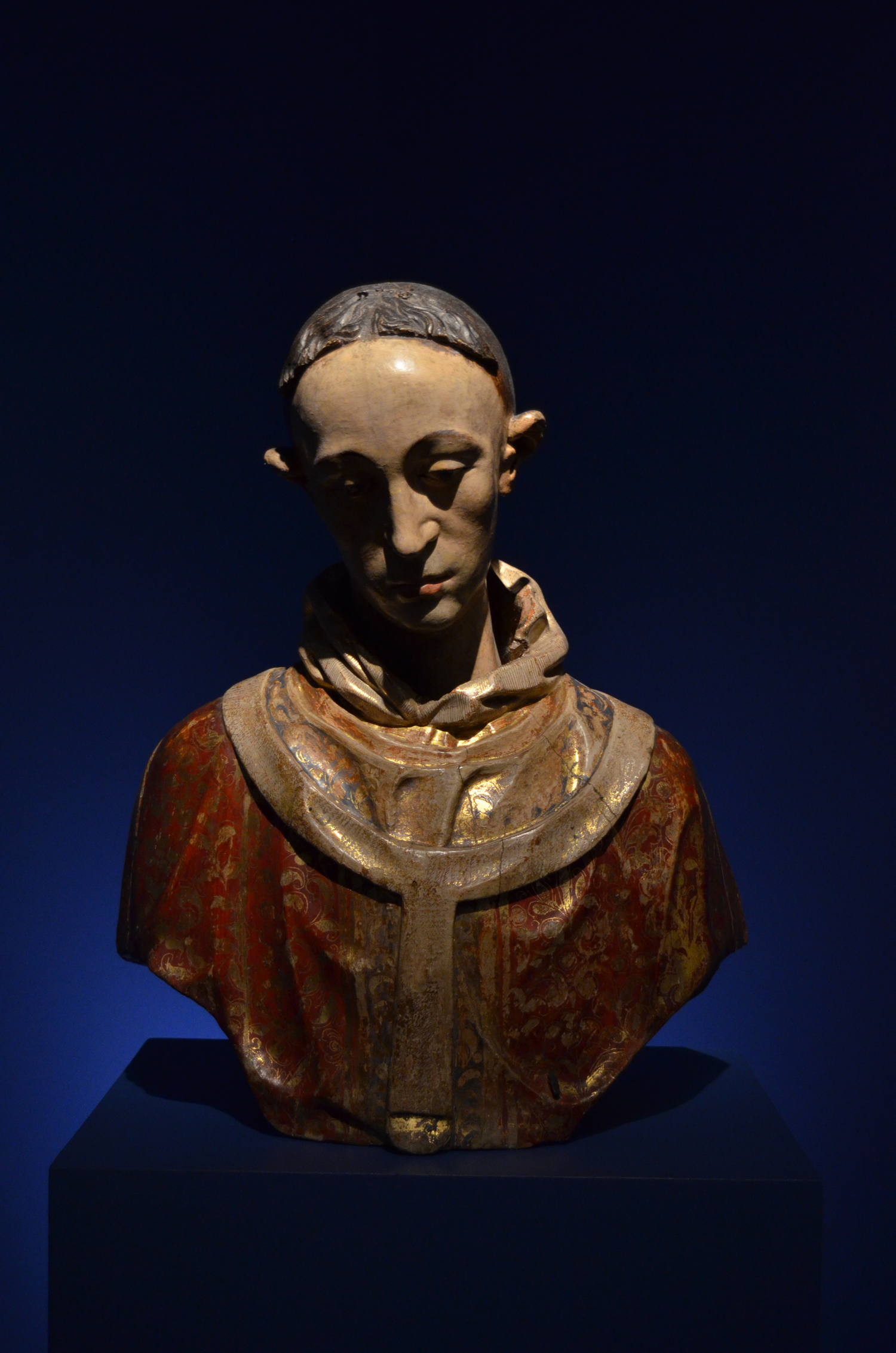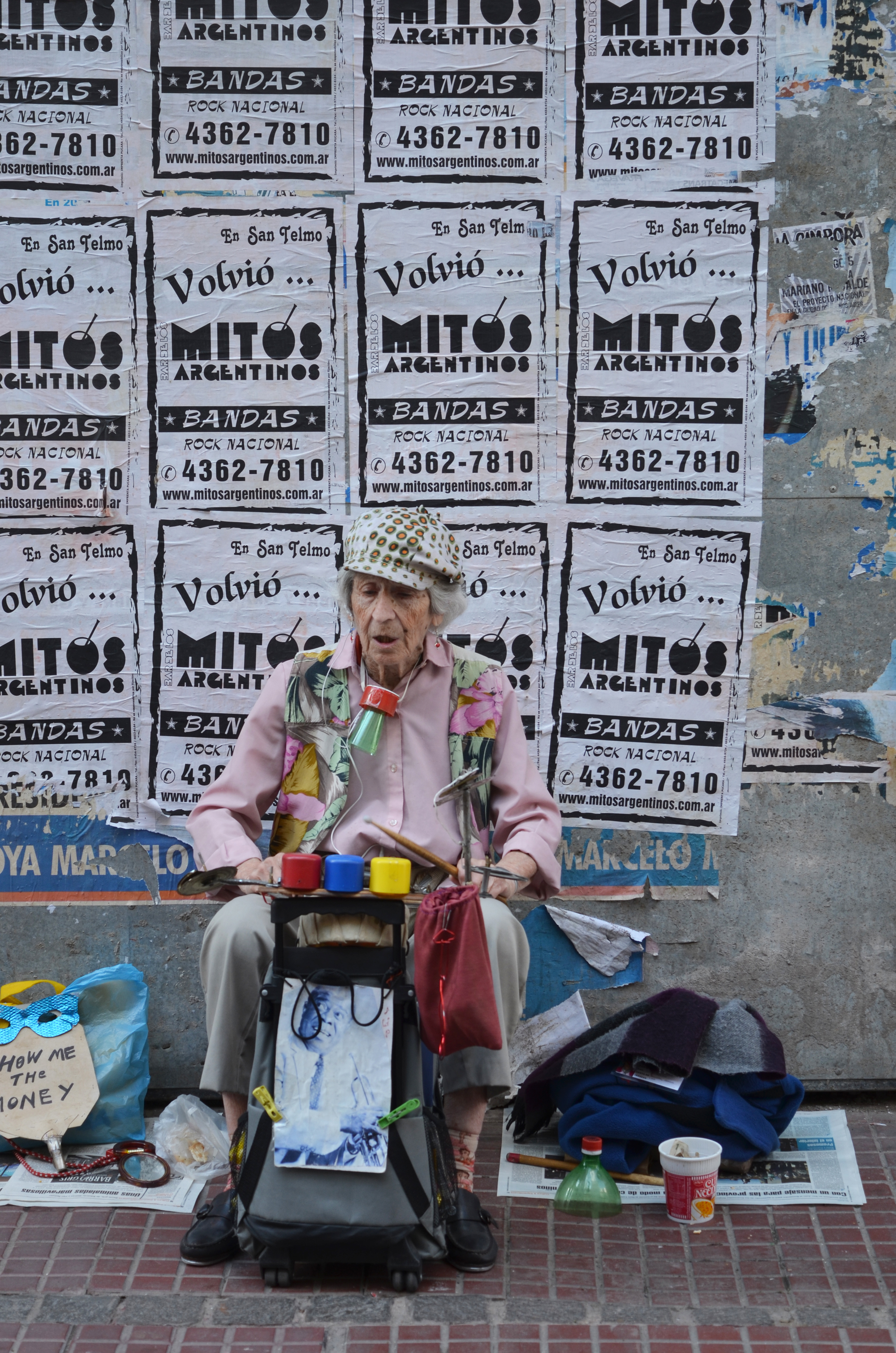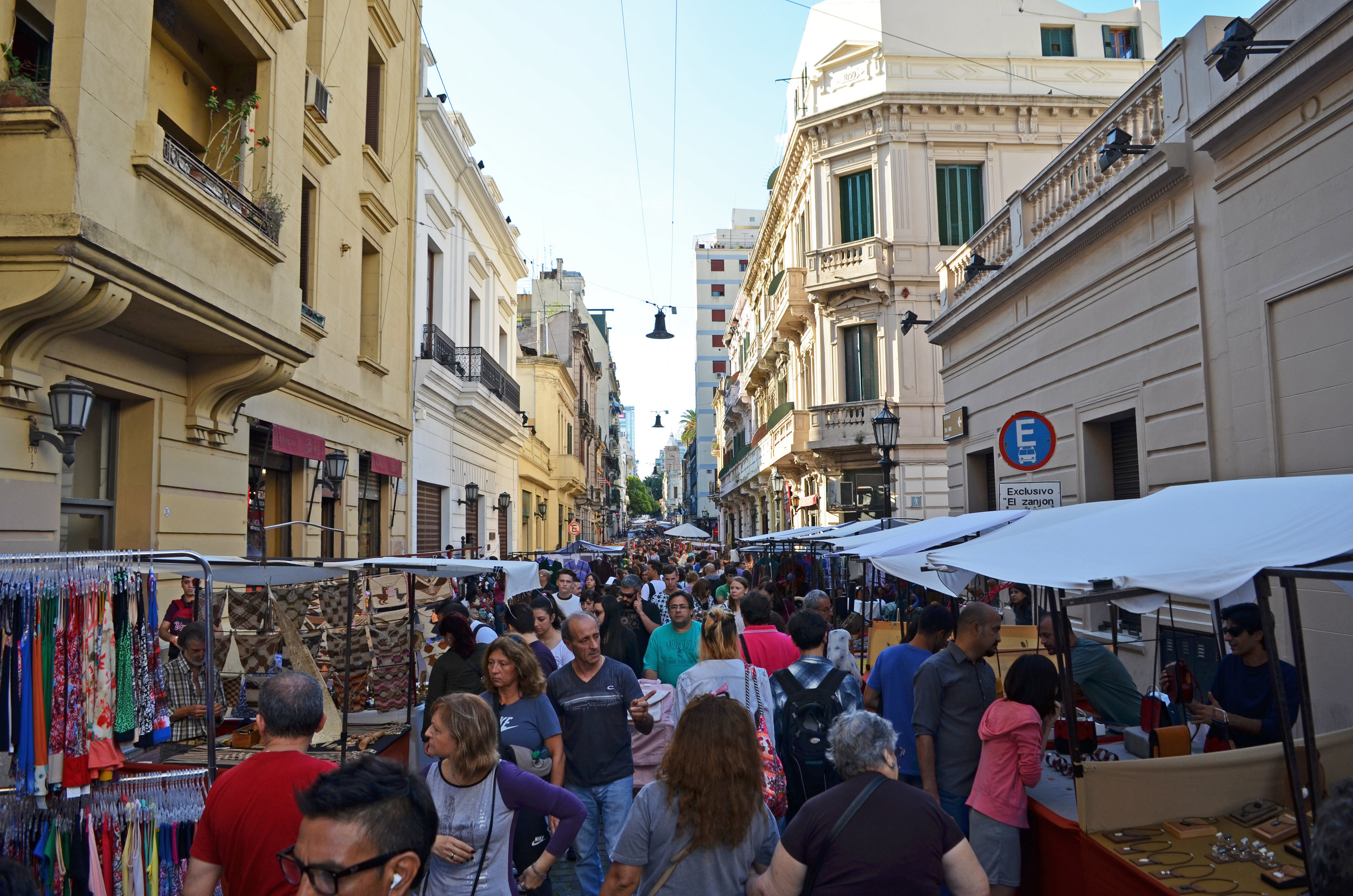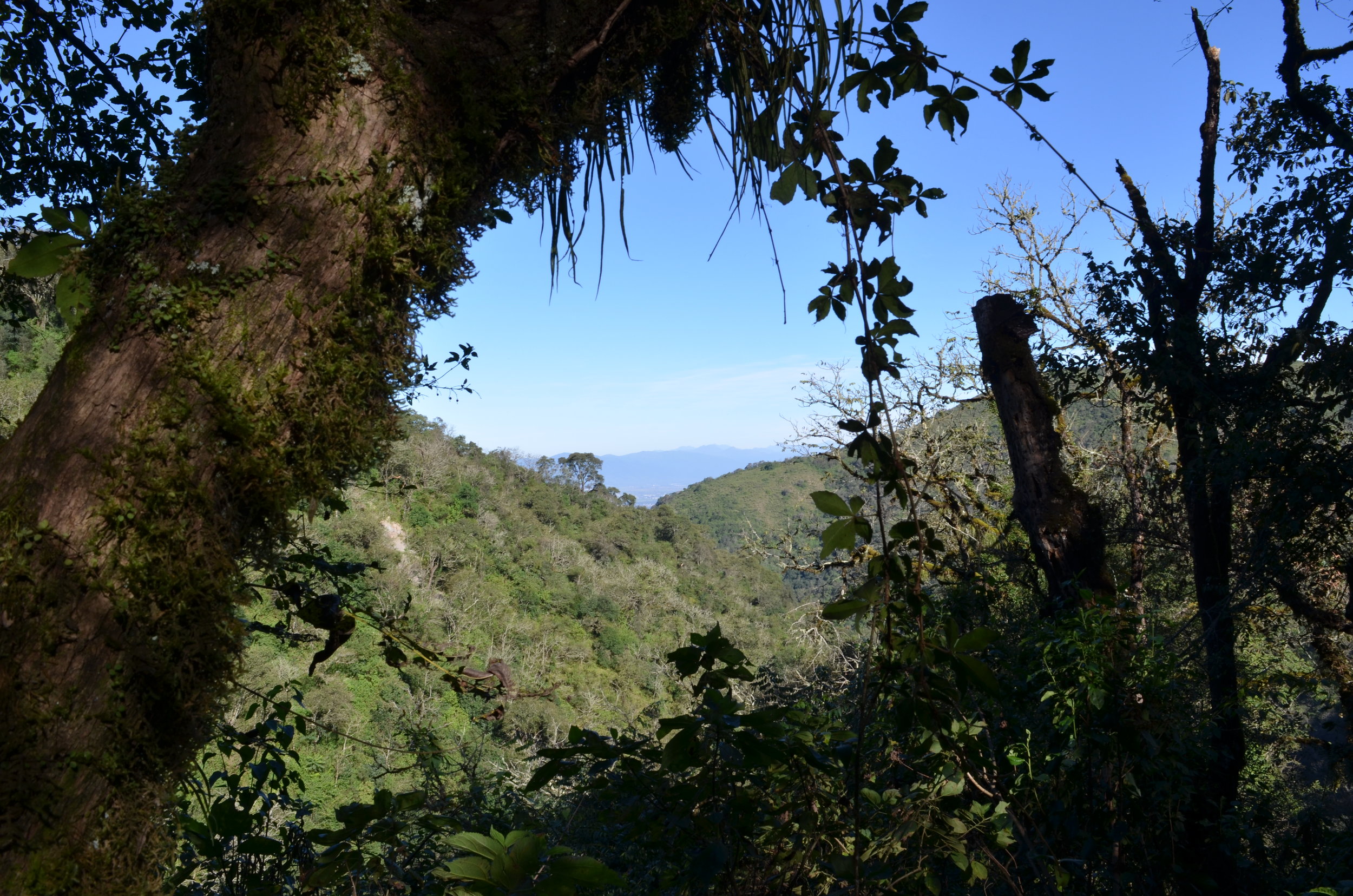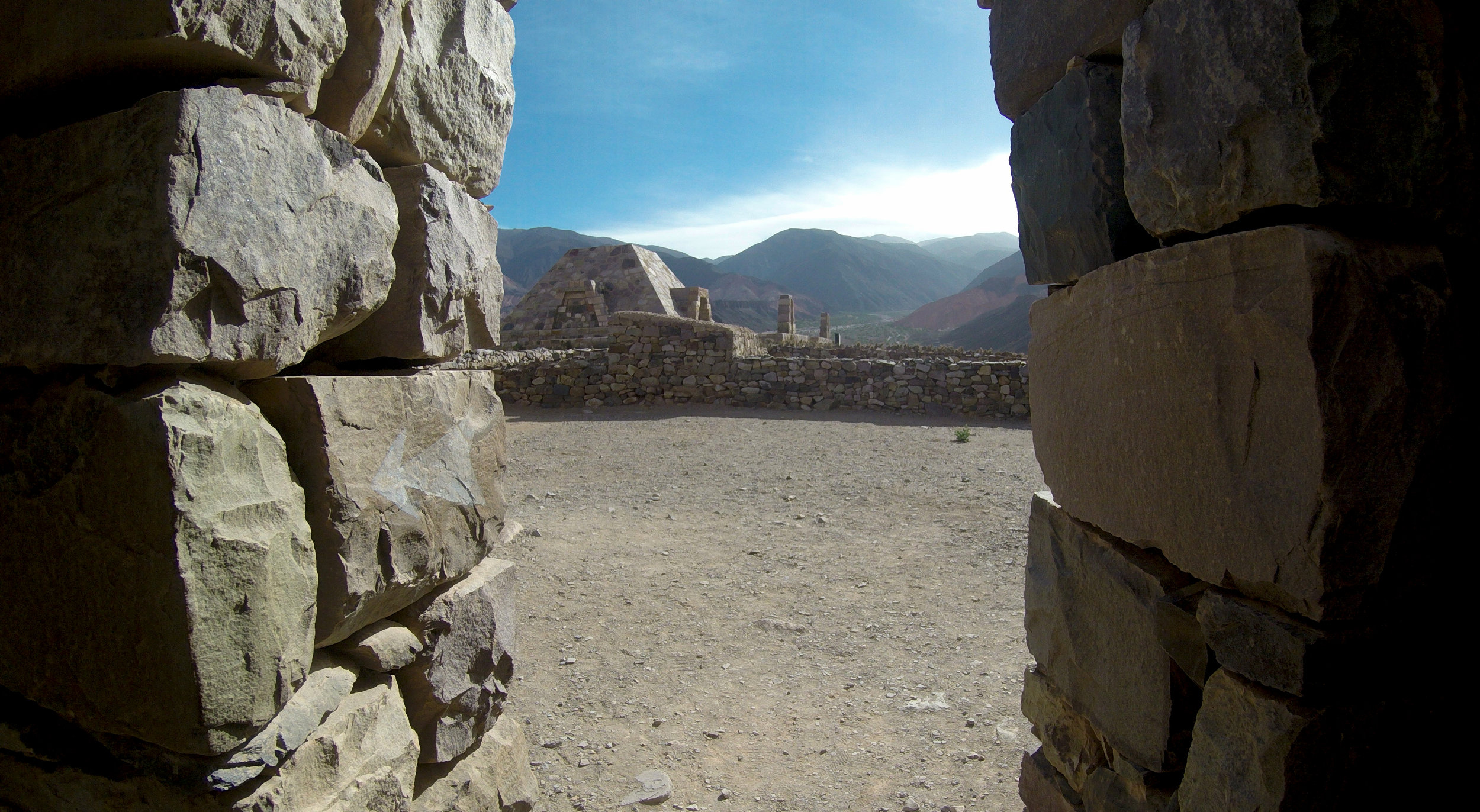3 Places to Visit in Argentina that are not Buenos Aires
Aleksandra Radic
“Wine is sunlight, held together by water...”
Most people think of Buenos Aires when they think of Argentina and for a good reason. It has a rich history, amazing markets, delicious food, great nightlife, the tango and much more. The other popular spot is probably Patagonia in Southern Argentina. We didn’t have a chance to go there, but it’s on the list. Everything is on the list.
We decided to travel north from Buenos Aires, and explore other amazing, and somewhat 'off the beaten path' spots.
BUENOS AIRES
Before I share the 3 places, I HAVE to mention a few must see spots in Buenos Aires because…how can I not? The city is pretty incredible. It's literally got something for everyone, especially if you are someone who loves art and music......and steak. It is definitely different from other cities in Argentina because of the noticeably high number of European descendants. During the 19th and 20th century, many people from Spain, Italy and Germany immigrated to Argentina, which is why more than 85% of the citizens are of European descent.
A couple dancing tango at the San Telmo weekend market.
Buenos Aires reminded me of a South American version of Paris, especially the Recoleta neighbourhood, probably due to its European-inspired architecture, Parisian style cafes and posh boutiques.
GETTING THERE
Tip: Not sure if you need a visa for Argentina? Check Your Visa Requirements at iVisa.com Today! You can process a visa from a computer, smartphone or tablet. It’s that easy! Travellers no longer need to research or get frustrated dealing with different Governments. Travel agents, Destination Management Companies and Corporates can use iVisa.com to process any travel visa. We provide the best solution in the market.
We flew from Sao Paulo to Buenos Aires with LATAM and that cost us $308/each. We arranged a pick-up through our AirBNB host and the ride to the apartment cost us $36. Sometimes it's so nice to arrange things ahead of time so you don't have to try and figure out which bus to take or how much a taxi driver is going to rip you off.
It was pouring rain when we arrived in Buenos Aires! We got settled into our cozy, airbnb apartment in the Recoleta and the first thing we did, as any person SHOULD do upon arrival in Argentina, is to buy steak and wine from the nearest grocery store. It cost us less than $10 and it was amazing! Welcome to Argentina - the land of Malbec, amazing steak and home to one of my favourite markets in the world!
WHERE TO STAY
Recoleta: This is a beautiful neighbourhood with several historical landmarks, but also very expensive. It's known for it's European architecture, specialty boutiques, fancy restaurants and expensive hotels. You are probably wondering how on earth did we end up here? Well, we somehow managed to find a nice place through AirBNB. A bachelor apartment cost us $570 for 10 days.
Palermo Neighbourhood (Palermo Soho/Palermo Hollywood/Palermo Chico): These three are really only separated by name but they are in the same neighbourhood. The whole Palermo neighbourhood is really cool. The streets are quiet during the day and full of trendy shops, art galleries, farmers markets, hippie chic restaurants and bars. If you are any kind of artist, you would love it. It’s very stylish and bohemian. If we were to do it again, we would probably stay here. At night, it’s very lively with people having late night dinners and drinks on rooftop bars. You will mostly find casual bars in Palermo instead of fancy night clubs.
WHAT TO SEE AND DO
La Recoleta Cemetary: This is a must see in Buenos Aires! The statues and mauseleums are very impressive and it’s by far the most incredible cemetery I’ve ever seen. It’s also home to hundreds of stray cats. You’ll find coffins of past presidents, influential politicians and the just plain rich and famous. One of the most visited tombs is that of Eva Peron (Evita), a famous actress, first lady and wife of Argentinian president Juen Peron from 1946 until she died in 1952. She used her political power to improve the lives of the poor, having been poor herself, and became a legendary figure in Argentine politics. There is a small entry fee of AR$100. You can find more info here: www.recoletacemetery.com.
The National Museum of Fine Arts: This museum is located in the Recoleta neighbourhood. It's a beautiful museum and most of the art is from the 19th century. Some well-known artists include Monet, Manet, Van Gogh, Degas, etc. But the best part.... admission is free!
Avenia 9 de Julio: This is the widest avenue in the world and the name honours Argentina's independence day. It is 460ft wide and has 12 lanes. It's impossible to cross in one shot when the light turns green. I challenge you to try!
San Telmo: This is my favourite area of Buenos Aires and it's actually the oldest barrio (aka neighbourhood) in the city. It's got colonial buildings, antique shops, tango parlours, cafes and the list goes on. This are is always filled with dancers and artisans - my kind of place! In order to see San Telmo properly, you have to go there on Sunday. There is a HUGE antique market which transforms the area into the best place on earth.
Plaza de Mayo: This is the oldest square in Buenos Aires. The name comes from May 1810 revolution, which is when Argentina claimed independence from Spain. There is always something going on there, especially protests. In the middle of the square is the Pirámide de Mayo.
There seems to be always something going on here. This was some kind of protest.
Puerto Madero: This neighbourhood is probably a little underrated. It was neglected for many years and finally it got a makeover in the 90s. It is very modern and now home to luxury hotels and apartments; restaurants, cinemas, and shops. The streets of Puerto Madero were named in order to pay homage to women. Each street is named after a famous Argentinian woman. One of the main attractions is the Puente de la Mujer, a bridge is meant to be a representation of a couple dancing tango.
La Boca: This is a working class neighbourhood in Buenos Aires and an area where immigrants first established themselves. The main street is known as Caminito which is full of brightly coloured buildings, tango, buskers and all kinds of tacky trinkets.
TIP: Don't stray too far from Caminito like we did. It's pretty sketchy and it didn't feel safe!
Visit a Parilla: Since Buenos Aires is a steak-lovers paradise, make sure to visit a parilla and try the amazing slow cooked meat, Argentine style!
Florida street: A great spot for shopping. It is a massive pedestrian street, without motorized vehicles.
Jardín Japonés: This is a beautiful garden, and it's actually the largest Japanese garden outside of Japan.
A LITTLE BIT OF TANGO
Tango originated in Buenos Aires in the 19th century. The new beat was created from a mix of Argentinian country songs called milonga with elements of habanera, polka and Spanish contradanza. Responding to this hybrid sound, the local compadritos (small-time hoods) forged a lively, leg-twitching bop, which simulated knife fights that characterized life in the slums. So, the tango was not originally a dance for the rich. In order to become acceptable to the upper classes, tango had to be shown worthy of European culture. As early as 1906 tango scores traveled to France, and by 1910 the dance became the latest fad for the Paris bourgoisie. London and New York were quick to follow. From then on, the tango was no longer a scandelous, working-class affair. It was now as respectable as the waltz but much more exciting and intimate. In Buenos Aires, the tango spirit is felt in daily existance even without music or a partner.
1. MENDOZA
GETTING THERE
We took a 14 hour bus ride to Mendoza to save money. Three companies we recommend are Andesmar, Flechabus and Chevallier. We got 'semi cama' seats which got us a snack, dinner, unlimited wine and coffee. It was very comfortable.
WHERE TO STAY
We decided to stay near Plaza Independencia since it's pretty central and booked an apartment through AirBNB for 7 days. This was by far the worst experience we've ever had. We had so many issues - a flood, dirty cutlery, cockroaches. We ended up getting into a big fight with the owner but in the end, we got a full refund and credit towards a new place. Thank god!
TIP: Don't stay in Mendoza. Unfortunately, we didn't do enough research ahead of time. The city is nothing special. If you are going to check out wineries, you're better off staying in Uco Valley or Lujan de Cuyo and exploring Mendoza for the day.
We planned a day trip to Maipu, which is the closest winery area to Mendoza. My suggestion would be to take a local bus and don't waste money on tours. From Roja street you can take #10 bus. In order to take the bus, you have to get a red card at a kiosk for 10 pesos. The bus ride was 45 minutes and cost 6 pesos per person. Maipu was nice but not what we were expecting. We were picturing beautiful wineries and views of the Andes mountains in the back. It turns out, Uco Valley and Lujan de Cuyo is where we should have been.
THREE WINE REGIONS NEAR MENDOZA
MAIPU
Some of the wineries, aka bodegas we checked out were Carivae, Trapiche and an Olive garden called August Olive. They were all good! The best way to get around is to rent bikes. A popular place is Hugo's Bikes, but there are other (and cheaper) options, like Orange Bikes.
LUJAN DE CUYO
This is a beautiful area! You can see the Andes mountains in the background from every winery.
We booked a tour though Bodega Altavista which cost us $12. It was very informative. Another spot worth checking out was Carmelo Patti, a very small, family run place. Our favourite was Vistalba. We booked a 4 course lunch and tasting to celebrate my birthday and splurge a little.
UCO VALLEY
Unfortunately we didn't make it to Uco Valley, but we've been told it's where the best Malbecs come from because of the higher altitute. The temperatures are high during the day and drop very low at night, creating the perfect environment for grapes to produce balances sugars and acidity. It's only an hour drive from Mendoza and it's suppose to be the most scenic of all three!
2. SALTA
Salta is located in northern Argentina and sits at roughly 3800ft. The city is very charming with colonia architecture and a thriving nightlife. In general, the province of Salta is known for beautiful scenery, vineyard and red-rock valleys. Our first impression of Salta was that it was much nicer than Mendoza.
GETTING THERE
We booked a bus to Salta thinking we were going to have the same experience as we did from Buenos Aires to Mendoza. We were also hoping for comfort because it was and 18 hour ride! Unfortunately, it wasn't at all what we expected. The bus was very basic and old, which is fine if you aren't expecting something better. The bus was 90% migrant workers from Bolivia and the two of us. Fun times!
WHERE TO STAY
We booked accommodation at the Wilson Hotel, a 5 minute waslk from Plaza 9 de Julio. The hotel room cost us $264 for 6 nights, with breakfast included. We had enough points with our TD travel card to cover the total cost. The food was decent. It was the typical Argentinian breakfast, a cafe con medialuna (croissant and coffee), plus ham, cheese, juices, and tea.
WHAT TO DO
MAAM (Museum of High Altitute Archeology)
A small museum worth checking out. It was created in 1999 after the discovery of three children (known as the Ice Children) from the Inca civilization whose bodies were said to be 500 years old! Admission is 200 pesos.
San Bernardo Hill
This is a great place to get a view of the city. You can get some exercise and woke up the 1,000 steps or take a cable car. You can find the steps behind the statue of Martín Miguel de Güemes, who led Salta's rebels in the Argentine War of Independence.
Plaza 9 de Julio
This is the main plaza in Salta full of cafes and bars. You can really experience the local vibe here.
San Lorenzo
A beautiful small town full of rivers and hill and just a short ride away from Salta. It has beautiful scenery and even a few wineries. It's a great spot for hiking! There is a well known 15km hike around the Quebrada San Lorenzo. It's challenging and we started out too late so we couldn't finish it. BUT, we did get chased by a famer and his horses down a steep and narrow hill. At one point, we thought we were going to get run over! Whether it's your thing or not, you can take a local bus #7 for only 4 pesos.
Cetedral basilica de Salta
Located in the main square, so you can't miss it. It's also beautiful and pink! It was declared a national monument in 1941.
We were also impressed with the variety of vegetarian restaurants. We didn't think people ate anything except steak, croissants and wine in Argentina....which is not too far from the truth. :)
3. TILCARA
Located in the northern province of Juyjuy, Tilcara is a small town with only 5,600 civilians. It sits at 8,100ft and is part of Quebrada de Humahuaca, a UNESCO world heritage site. I was really impressed with this small town especially when I found out that the habitation of Tilcara can be traced back more than 10,000 years, making it one of the oldest continuously inhabited areas of Argentina!
We arrived at the tiny bus terminal and felt the altitude change immediately, especially Mike who got a throbbing headache the second he stepped off the bus. It affected him so much that he was bed-ridden the entire time. We had pills for altitude sickness, but they're meant to be taken a good 10 hours before the ascend, and we totally forgot. Actually, we didn't realize how big the altitude difference was between Salta and Tilcara. Basically, we climbed nearly 7,000ft in less than 3 hours! I was told to buy some coca leaves at the market and sure enough it helped and he got acclimatized after a few days.
GETTING THERE
From Salta, you can book a bus for roughly 170 pesos. The ride is about 3 hours.
WHERE TO STAY
There is a variety of hostels and and bed and breakfasts to choose from. We stayed at Hostal Antigua Tilcara in a dorm with 6 other people. We loved it! It was clean, and had a good breakfast. The only down side was that it was a little bit further from the main area (and by further, I mean about 3-5 min walk.)
WHAT TO SEE AND DO
Pucara
Pucara de Tilcara is the main attraction in town, which is a pre-Inca settlement. It overlooks the Rio Grande de Juyjuy and a long stretch of the Quebrada de Humahuaca. Here you can visit the Acheological Musem, which has artifacts from all over the Andean world, and the Botanic Garden of heights which is home to some of the biggest cacti I've ever seen. I decided to check this out on my own while Mike was resting. I enjoyed the hike so much that I had to stop every few minutes to take in the surroundings. I felt like I was in a painting.
There is also a pyramid that you can't miss but it has nothing to do with the ancient tribes. It was built to honour the first archeologists who worked there.
Garganta del Diablo (Devil's Throat):
This is another beautiful hike that takes up to 4 hours. Dress warm because it can be really windy and cold even though the sun is shining and there isn't a single cloud in the sky. One minute I was wearing a t-shirt and getting sunburned, and the next I was bundled up and freezing! Before I started the hike, I stopped at a really cute restaurant and had the best meal!
Once I got to the top of the hill, I paid a small fee and descended down the canyon which finally led to the waterfall. You can relax here and even go for a swim.
To sum it up, Tilcara is totally worth visiting. It's a charming place with good restaurants, a market, adorable cafes, and the most gorgeous landscape. If you love history and hiking, it's a must see spot.
HERE'S THE BREAKDOWN OF HOW MUCH WE SPENT FOR 28 DAYS:
Accommodations: $744
Food: $904
Domestic Transportation: $529
Misc: $431 (activities, souvenirs, etc)
Tourist Visa: $192 ($96 each)
Total: $2,800
Daily Average (per person): $50
*Excludes one-way flights from Sao Paolo ($307 each)
**Currency exchange $1 (CAD) = 11.24 pesos!



